If the Bugatti Veyron “transitioned” into a truck, this might be the result.
Instead of 1,000 horsepower, almost 1,000 ft. lbs. of torque. Instead of a 200-plus MPH top speed, the ability to drag around more than 20,000 pounds of trailer.
They both have aluminum bodies – but the Ford weighs twice as much – and is three times as tall.
Either way, it’s impressive.
An even bigger – and much beefier – version of Ford’s full-size pick-up truck. The look is similar, but under the new aluminum skin, there’s a sturdier frame and suspension built for real work while under the hood, there’s one of two huge V8s – gas or diesel – vs. the turbo V6 that’s the top engine in the lighter duty F-150.
Hence F250 Super Duty.
It is available in regular cab, extended cab and crew cab configurations, with either a 6.8 foot or 8.2 foot bed and with – or without – four-wheel-drive.
Prices start at $32,535 for a base trim XL with the standard 6.2 liter gas V8 and 2WD.
A top-of-the-line Platinum trim with the 6.2 gas V8, 4WD and 8.2 foot bed stickers for $62,310. There are also XLT, Lariat and King Ranch versions.
The 925 ft.-lbs. of torque 6.7 liter PowerStroke diesel can be added to any trim for an additional $8,795.
The F250 gets a wheels-up redesign for 2017, including an all-aluminum body – unique among trucks in this class, which still have steel bodies.
WHAT’S GOOD
Tows the most: a mighty 21,000 lbs. vs. 18,100 lbs. for the Chevy Silverado 2500 HD and 17,980 lbs. for the Ram 2500.
Strongest engines – gas or diesel.
Aluminum body cuts curb weight by several hundred pounds; rides smoother than heavier Chevy and Ram.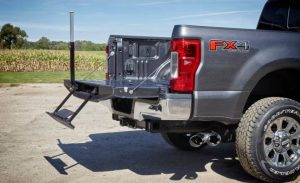
WHAT’S NOT SO GOOD
Dimensions – length and height especially – are almost cartoonishly huge.
Aluminum body is more difficult/expensive to repair when damaged than steel.
Pricier than rivals.
2500 and up trucks may be the last redoubt of the standard V8.
All the current 1500s – including the Ford F150 – come standard with sixes and most of the F-150 ’s optionally available engines are sixes, too. You can still get a V8 – but it’s a small (5.0 liter) and mid-rank V8.
The top F150 engine is a twin-turbo V6.
For those who hew to the view that there is no replacement for displacement, there’s the F250’s V8-only engine lineup.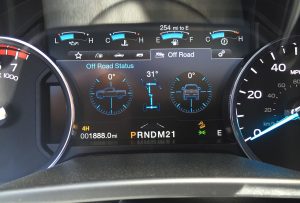
Standard equipment is a 6.2 liter gas V8 that makes a class-best 385 hp and 430 ft.-lbs. of torque – stronger than either the Chevy Silverado 2500 HD’s standard 6.0 liter V8 (360 hp and 380 ft.-lbs. of torque) and the Ram 2500’s standard 5.7 liter V8 (383 hp, 400 ft.-lbs. of torque.)
The Ram 2500 can, however, be ordered with a larger – and stronger – 6.4 liter V8 that makes 410 hp and 429 ft.-lbs. of torque. The Ram is the only one of the three 2500 Series trucks that’s available with a second gas engine choice. Which makes it an economical alternative to the Ford and Chevy’s optional diesel engines.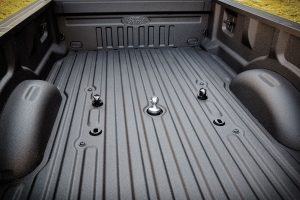
These are immensely powerful – 440 hp and a boggling 925 ft. lbs. of torque (the Chevy’s optional 6.6 liter Duramax diesel makes slightly more hp – 445 – and a bit less torque – 910 ft.-lbs; the Ram 2500;s 6.7 liter Cummins turbo-diesel makes 385 hp and 900 ft.-lbs. of torque) but they are also immensely expensive. Selecting the F250’s optional PowerStroke diesel V8 adds $8,795 to the sticker price. The Chevy’s Duramax costs even more – $9,005 on top of the price of the truck itself.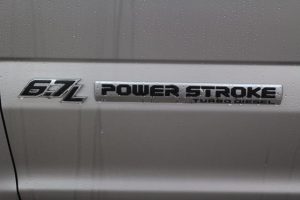
Or, you could upgrade to the 6.4 liter gas V8 in the Ram 2500 for just $500. And you can get this engine with a manual transmission, too.
All the others are automatic-only.
But if you need ultimate towing capability, there’s no substitute for the diesel.
For the Ford diesel.
It is rated to pull 21,000 lbs. – vs. 17,890 for the Cummins-equipped Ram 2500 and 18,100 for the Duramax-equipped Chevy.
It’s not even close.
The Ford’s max payload capacity – the load you can carry in the bed – is also top-drawer: 4,200 lbs. vs. a startlingly puny-in-comparison 3,534 lbs. for the Chevy 2500 HD.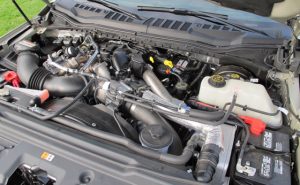
Another item in the Ford’s favor – whether you go with the gas or the diesel V8 – is that you get the same heavy-duty six-speed automatic. The one built to handle the diesel’s 925 ft.-lbs. of torque. Paired with the gas engine (which makes not quite half the torque the diesel belts out) this transmission ought to live forever.
The Chevy 2500 offers the outstanding Allison 1000 six-speed automatic with the Duramax diesel, but only with the diesel (and only if you pony up the additional $9k). The gas V8 gets a lesser-duty six-speed automatic that’s a perfectly good box – but not overbuilt and indestructible, as the Ford’s diesel-duty automatic is.
Fuel efficiency is not exactly the right term here – and EPA doesn’t rate 2500-and-up-trucks, so there are no official stats.
During a week-long test drive in mixed-use (city/highway) driving, I averaged 15.2 MPG in a Crew Cab 4×4 with the honky-tonky diesel V8.
Almost exactly the same as a Bugatti Veyron.
Have you ever seen the bridge of one of those super tankers? The gigantic ship is controlled by a toggle. Apparently, out on the open ocean, these things are fairly manageable.
And so is the F250.
Once you climb on board (literally) and get her pointed in the direction you intend to go, it is a pretty road-friendly ride. No toggle, but minor course adjustments via the steering wheel result in similarly effortless directional control and – notwithstanding the heavier gauge frame, the beefier suspension vs. the F-150 – it doesn’t feel all bound up, stiff and over-beefy. The chief obvious difference is the altitude of the seats – but otherwise, it’s no more intimidating to pilot than the F-150 and just as comfortable to spend time in.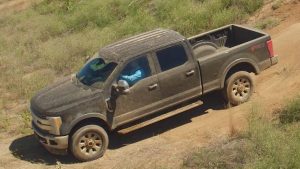
Some reasons why: Though it has a solid axle and leaf spring suspension out back, there are just three leafs per side vs. the usual bundle of four or five you’d expect to find underneath something so super duty. The usual way to increase the heavy-duty-ness of a truck being to add rather than subtract leafs. These three leafs most definitely handle the load, but not as rigidly – so the truck rides better. This is particularly noticeable on gravel roads washboarded by rain and erosion.
Axle hop is minimal.
Another reason why: The aluminum body. Ford shucked the steel shell to squeeze out a few more miles-per-gallon, but an additional benefit is the shedding of several hundred pounds – which means less weight to slosh around and need hard-riding suspension bits and pieces to keep it from sloshing around.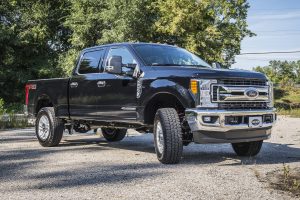
But the size of the thing is daunting.
A regular cab/long bed F250 is 231.8 inches long overall – just shy of twenty feet. It stands 81.1 inches high – almost seven feet off the ground. All of the 2500 series trucks are behemoths, but the Ford is a bit more behemothian than the Chevy and the Ram. For example, the Silverado 2500 in the same configuration – regular cab, long bed – is 224.4 inches long overall and 77.8 inches tall.
A crew cab F250 extends to 266.2 inches – more than twenty-two feet long overall.
As huge as this thing is, it’s startling how quiet this thing is. Even with the nearly 1,000 hp diesel under that blunderbuss of a hood. As you walk up to the truck, you see those drainpipe-sized exhaust pipes – which appear to be at least five inches in diameter, exiting in twin tips with curious little baffles cut into them. You expect to hear Kenworth-esque rumblings and rattlings – like an old coffee can with a bunch of loose bolts in it being shaken.
But you hear almost nothing.
How they got almost 1,000 ft.-lbs. of diesel V8 to make less apparent noise – inside the cabin – is either a function of engineering genius or the liberal use of lots of sound baffling cocooning the cabin.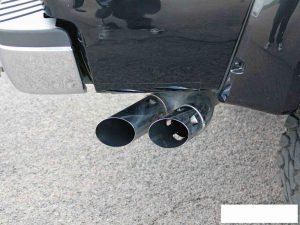
Maybe it’s those baffles. Regardless, it is startlingly quiet. Weirdly quiet – like an ocean-going tanker that glides by silently at 30 knots.
Even with the exhaust brake engaged (electric-automatic; just push the button on the top of the center stack and use the exhaust to slow the truck when descending grades) it’s hard to tell there is a diesel under the hood – let alone one capable of almost four digit torque output.
It’s quick, too.
Six thousand-plus pounds for the lighter versions and behemoth can still reach 60 in just over seven seconds. Which is Bugatti-esque for something that weighs two thousand pounds more than a Bugatti. It’d be interesting to find out how quick the Veyron is with a 2,000 lbs. trailer hanging off its rear bumper.
The standard fuel tank holds 34 gallons – which allows for non-stops just over 500 miles.
A Veyron – 7 MPG city 15 on the highway – can only go about 246 miles on the highway before it needs to pit.
A 48 gallon fuel tank is available optionally – bumping up the range to 600-plus highway miles.
That’s nearly as good as a Prius hybrid!
The Bee Gees are responsible – for good or not – for the falsetto sound of ’70s disco pop.
Ford is – for good or not – responsible for Codpiece Fever. Trucks disproportionately huge, even in relation to large men.
The Super Duty 2500/3500 were the first trucks to have Adam’s apple high bed wells . . . the Adam’s apple belonging to a six-foot-three man (me). They’re not quite that high – but they are close to that high – and the result is that even a guy as tall as I am can just barely finger-touch the bottom of the F250’s bed.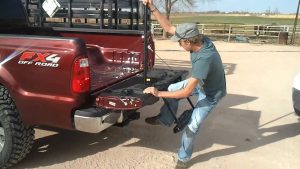
Or an F-150’s
Which is why the Metamucil Pole.
Ford does not call it that, of course. But it fits.
First, you lower the tailgate – which “damped,” so it goes down gradually rather than just flopping down with a clank.
Next, you push the button on the leading edge of the tailgate. Out pops the step ladder. Adjacent – to its left – the Metamucil Pole. It’s a collapsible piece of 2×2 steel you grab hold of as you Old Man your way up into the bed. A young, limber guy can climb into the F-truck’s bed like he can climb a tall fence out in the field. But young guys generally can’t afford this truck. And the older guys who can need . . . the Metamucil Pole.
It is nice that Ford includes this, but it ought not to be necessary. The F250, the Chevy2500, the Ram 2500 – and the current crop of 1500s – they are all Codpiecian and suffer from these preposterously over-tall bed walls and Monster Truck ride height that make accessing the bed problematic for anyone who isn’t proportional to the truck – which means anyone less than seven feet tall and built like Hulk Hogan used to be.
Because the bed is four feet across, you can haul stacks of 4×8 OSB or drywall without canting them at an angle – and that (plus the ability to haul them in mass quantity) is probably the chief advantage of a Behemoth-Sized truck.
Front legroom (43.9 inches) is less than in the Chevy (45.3 inches) but more than in the Ram (41 inches). All are spacious, though. Legroom over 40 inches is largely about bragging rights than anything functionally meaningful – unless you are seven feet tall. Same goes for headroom and shoulder room – in all of them. There is plenty of room for five big guys in any of these crew cab 2500 trucks.
It doesn’t come with tugs to aid in maneuvering it in close quarters, but you can get a 360 degree/seven camera system that helps avoid bumping into things. There is also an available Trailer Reverse Guidance and Blind Spot monitor that extends the length of a trailer as much as 33 feet long – to help you avoid backing into things.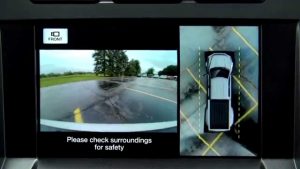
Also available: Adaptive Cruise control, which maintains whatever speed you set – accelerating and decelerating the truck to match the ebb and flow of traffic – even with a trailer hooked up. Adaptive cruise isn’t a new technology, but the Ford is the first 2500 series truck to offer it and – currently – the only 2500 series pick-up that does.
You can order Cowboy Cadillac amenities such as a full-length panorama sunroof, heated and cooled seats, a heated steering wheel, 20 inch wheels and a premium 10-speaker Sony surround sound audio rig.
Base XL/XLT trims ordered with 4WD get old-school manual locking hubs – a feature that’s becoming as hard to find as a standard V8 in 1500 truck. The manual hubs take a bit more driver action to engage than automatic hubs, which only require the driver to rotate a knob – but they are inherently heavier-duty mechanical interfaces less likely to suffer electronic hiccups at some point down the road, post-warranty.
The standard (XL/XLT trims) touchscreen is a little small – 4.2 inches – but Ford’s new Sync3 interface is a huge improvement over the previous MyTouch interface. Lariat and higher trims get a larger 8 inch touchscreen and an upgraded version of Sync.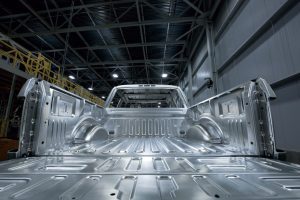
Ford touts the wonderfulness of the aluminum body – and it is, in some ways. If this thing were still made out of steel, it’d probably get single digit mileage and would ride rougher and handle more like a piece of heavy equipment than a jacked-up car.
But . . .
Aluminum when damaged is much more challenging – read, expensive – to repair. It requires dedicated work space at body shops (expensive) and welders who have higher-level skills (expensive) and this will likely result not only in higher Fix It bills when something gets bent or crumpled but also higher insurance premiums on account of that.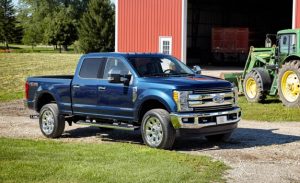
It will be interesting to see whether Chevy and FiatChrysler (Ram) follow suit – or stick with steel.
THE BOTTOM LINE
Maybe they should put a Veyron in the bed of each one they sell. Then you’d have your Caitlyn . . . and your Bruce, too!
If you like what you’ve found here, please consider supporting EPautos.
We depend on you to keep the wheels turning!
Our donate button is here.
If you prefer not to use PayPal, our mailing address is:
EPautos
721 Hummingbird Lane SE
Copper Hill, VA 24079
PS: EPautos stickers are free to those who send in $20 or more to support the site. 


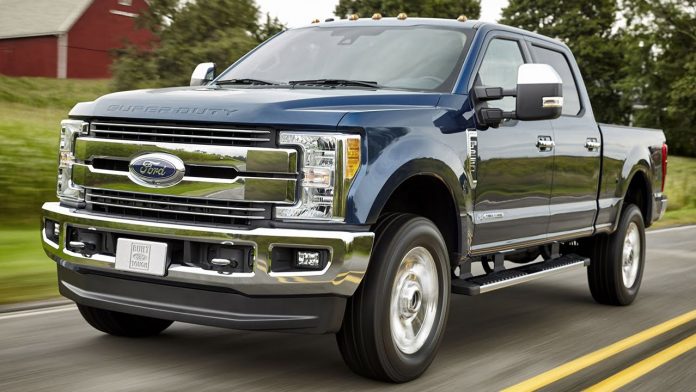

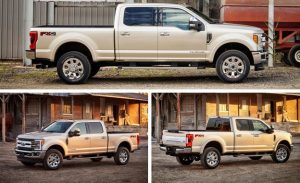
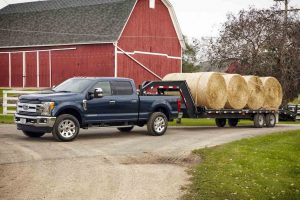

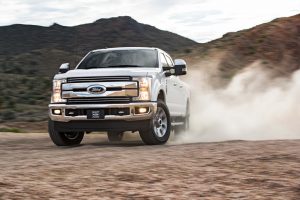
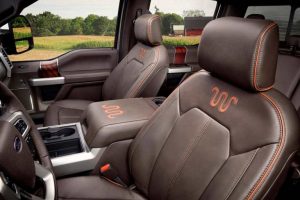
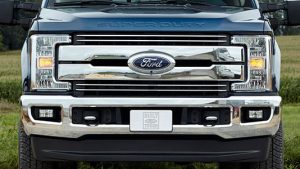
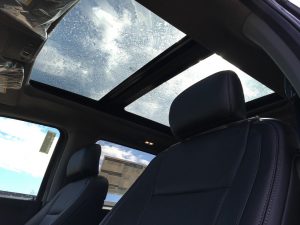






I definitely would not want to be driving one of these aluminum-bodied sleds if I got T-boned or a rollover. The sheetmetal in cars and trucks has gotten progressively thinner since the 1960s. Now they can’t thin it out anymore without it crumpling at the slightest touch so they went to aluminum. Eventually they’ll go to stiff plastics. And all because Uncle Scam’s wonderful regulations that are supposed to protect us from ourselves.
Love my Brothers 93 silverado , that was a sane truck , his current Blackhole is a 2500 83 Chevy that someone tried to make a “Dooley” out of , 460 cid rat has plenty of torque. BB Chevys always made good truck engines , after the build His fiddling with the Holley carbs , has strengthened my love for fuel injection. When He had the headers on it, it about to gas me a couple of times , now its doing good with stock manifolds. I think its a dang shame what GM did to the Big Blocks just to get rid of them , The 8100 , my Brother traded on the skid steer , was less than impressive . Another shame was how Ford used have a fairly decent engine in the 385 series*( or was it 335?) then finally culminating in the pathetic 460s , now I just don’t care what Ford does ( especially when I learned what they did with the first turbo powerstrokes)
Henry must be turning.
I wouldn’t trust the diesel engine in Fords. It’s the third completely different engine in a decade compared to the Duramax’s one since 2001 with minor changes to injectors and such. Look at the resale value of a Duramax diesel with 150,000 miles compared to a powerstroke at 150,000 miles. No comparison which is better. Now you have an aluminum body and it will get worse.
Ford pulls tow ratings out of their arse. Ive seen the tow ratings on the F150 change–just so they can have the highest tow rating–with nothing changed on the pickup from the previous year. They follow absolutely no standard. The Chevy and Dodge are every bit as capable as the Ford at towing 21000 lbs. The Dodge has the best engine brake of the bunch because of the straight six design of the engine. With the Aisin transmission option, the Dodge is tough to beat engine and tranny combo, with the truck itself not being as good imo.
All of these “loaded” pickups are so gaudy it’s ridiculous.
The 6.0 and 6.4 are both made by international and a very similar. The fuel system was the only large difference The 6.0 was a lot of trouble but much of the problem was they were hard to diag for the first 2 years. People claimed the headgaskets always blew but it was usually the egr cooler. Between both of use at the shop only have seen 3 blown. We’ve even had some with 300k and have never been touched.
The 6.7 has been real good, with few common problems. Earlier ones had EGT sensor, DEF and plastic oil pan, problems. Not defending Ford, I hate them and in less than 5 years we figure all the older techs will be gone and they’ll have no one to fix their junk. I think the average age of a tech is 47 and with the manufacturers cutting the labor times they’re abandoning ship FAST, either changing professions or retiring.
I’m partial to Toyota myself, but I have owned and still own GM vehicles. I have owned Ford, Dodge, Nissan and KIA(worst vehicle ever). One thing I love about GM–with all their shortfalls–they are consistently the easiest to work on for an average wrencher without computer equipment etc. Fords seem the most difficult to work on as everything is crammed in tightly. DOHC is still somewhat of a mystery to me and GM has the most engines without that crap. My brother is a diesel mechanic and has explained DOHC to me but it is just complicated in my mind.
I love my 73 Oldsmobile Toronado. The 455 is an engine. I can fix anything on that car with my collection of tools. I love the smell of the gas when it starts up. Reminds me of when I was a kid in the mid to late 80’s and all of the cars were like that. Wouldn’t it be great if you could have as simple or complicated of car as you wanted, brand new off the lot?
ancap, Ford’s been pulling those tow ratings out of their ass for decades. Even when the 454 had been denutted it still produced gobs more power than the 460(sorry bearings)but at no time has GM ever claimed the highest towing capacity. I’ve driven a lot of Dodge’s and while the engine(in most, not the 24 valve)was great the rest of the truck sucked with hard to get, expensive parts.
I hope a day where a Dodge diesel accelerates just enough to get the crew cab and crew you’re driving along with a big trailer onto a busy two lane highway and then return to idle isn’t the tragedy it might be. We finally found out turning one off and on 5 times would reset everything including the non-communicating fuel solenoid.
🙁 What a shame.
Aluminum? Gee…save a few hunnert pounds, and it doesn’t make a dimes difference in the MPGs. I’ve had trucks with the same engines and gearing that were more than 1000 lbs different and got the same mileage. It’s all in the gearing…
And that has got to be the ugliest header (grill/headlights/edge of hood) I have ever seen! My ’99 F250 is a handsome truck. This $70K hi-tech Lord Fauntleroy Special is an abomination!
No doubt has electronic automatic shut-off when the DTF fluid runs out or the emissions gives an improper reading to the CPU….. (Now we are seeing the true purpose of the electronics in these modern toys!)
Is there anything left that they haven’t ruined yet?! No wonder old cars/trucks are selling for so much.
Gotta respect Caterpillar at least. Uncle started crippling even big truck engines, so rather than play along and make a degraded product, they just got out of the truck engine market.
Instead of technology being used to improve things, it’s being used to make things worse, and to deprive us of our control of what is ours, and our privacy. ?
Well, enough of my Mary Poppins-like rant…. ?
Reply
I know a guy with a brand new Mack and 15 liter Cat. engine. The fact that it had some trouble in the first week doesn’t mean it isn’t a Cat, just one with problems.
It’s not a new engine. They don’t make them.
The trucks are so big and so are the people that are being hauled by the truck. Huge fat bodies need huge fat trucks. Just recently I saw a huge woman exit a small Subbie. How she got into it is beyond me. She was twice as wide as the seat. I wonder how those little jap cars do not bend under such enormous strain.
A coworker has a side job of home builder (he’s the boss) and has one of the aluminum F-150s, and has used it to tow a two-axle trailer loaded up with stone and mortar. Total load was about 13,000 lbs, and he says the turbo V6 handled it no problem on Austin’s hills.
So far the only problem he’s had was with the rear differential and it was covered under warranty. Trouble-free otherwise. He’s on his second set of tires.
Hi Chip,
I’d prefer steel – just as I prefer a V8 to a turbo V6.
Neither of these two provide an advantage that justifies their costs – both up front and down the road. And they each have their own liabilities as well.
If I were in the market for a new truck – a 1500 or a 2500 – I’d probably buy the Chevy, damn them. 🙂
eric, I won’t address the engine but aluminum for the body is the choice of big rig makers. The cheapies use fiberglass front ends and try to save weight elsewhere. A classic Pete is aluminum body including that long front end and it’s one hell of a lot easier to handle too. If the gas struts go out on a Pete front end I don’t have any problem flipping it up but given the same situation on a International and I nearly bust a gut trying to get that bastard up. Most people just grab the rear of the fender and to hell with lifting it from the front in the proper way. These are easily seen by the cracked and broken fenders.
I haven’t seen a dump bed made of aluminum yet and doubt I ever will since steel beds get bent, cut, and generally so rough on the bottom they won’t dump correctly.
Still, I have no problem with cabs being made from most anything except really thick fiberglass and that goes for car and pickups too. If you notice on a few year old SUV, esp. those made by GM, Buicks are most noticeable. The upper and lower side panels all the way from front to rear are steel and plastic. As the paint ages you can see a different in hue.
My neighbors new Chevy pickup is noticeably more rigid on the sides of the cab than the older ones since the door skins are plastic. He won’t have it long enough(company changes every couple years since they take such a beating and due to tax benefits)to see a change in the paint on it although since the whole door skin is plastic it won’t be like those small SUV’s with an upper and lower half to every panel.
As for GM pickups, there are lots of reasons to prefer one. GM has always had a lighter front axle weight due to lighter engines and transmissions, simply a much more sophisticated casting process. They and BMW began using lost foam casting along about the same time(long ago). Ford and Dodge were much heavier in front and back in the 80’s Ford lightened their beds. This front to rear weight ratio sucks for 4 WD when operating in really slick stuff but the light beds brought the big feet to headache racks because of the bed cracking where the headache rack sat. A friend with a body shop loved the things since they got him a lot of business. Didn’t make a damn on Dodge’s since Dodge really wasn’t a player till their new body style in the 90’s when they got away from simply mimicing the GM body. Their Cummins engines virtually put them on the map.
But independent front ends even on 4WD and all the way to one ton made GM the choice for handling and ability in 4WD and the load sensitive leaf spring system on the back made GM’s sit lower and handle much better and ride much better. GM cv joints were always better than the rest as were their u-joints. A friend with a Ford and I with a GM used to change out sometimes simply for what we had rigged them to do at the time(it varied during the year) and his 4WD always bound up then eased up and then bound up when turning sharply and not only didn’t the GM not do this but it turned a much tighter turn.
Then there was the difference in the power steering pump, the a/c compressor, the cooling system and general ease of maintenance and parts replacement plus parts interchangeability.
One of the line techs at work got a new bucket last year. In addition to the aluminum body the outfitter is now installing aluminum toolboxes and back porches with very large auxiliary battery banks to run the hydraulics (along with the PTO when the battery gets low). He said he has to be careful how and where he parks because if there’s any twist to the frame the toolboxes will pop open or jam shut. Not technically Ford’s problem, but that never happened to steel.
Fuel economy isn’t much better than what he got in his old V-10 gasser. Not sure what the curb weight is but I’ll bet they beefed up the lift for saaaaaaaaafety (and obese America), along with all the extra batteries to reduce idle engine emissions.
The frame of the truck is steel, only the body is aluminium. It sounds as if the modifications to the truck cause frame twist.
These trucks are the big cars we once drove. Since the government outlawed big cars, people buy these. That’s why I think so many people who really don’t need them buy them. They want something big. Something the automakers can’t make for us anymore as a regular car. It’s just a bonus you can haul a couple dozen sheets of drywall.
I think the bed walls are the tail-fins of today.
So many car trends over the years are silly or ridiculous, but the government regulating the h#ll out of everything only makes that ten times worse.
tail light is $900
has a LED light and back up radar built in and its all glued together, the lens is not removable to service any parts inside.
Hi Justin,
The replacement cost of modern car head/tail-light assemblies is literally not believable … until you’re faced with having to replace one. Even my ’02 Frontier. Deer strike a couple years back. Had to replace the driver’s side headlight assembly. It cost about $160 – more than the fender and easily five times the cost of the sealed beam headlight that my otherwise almost-the-same ’98 Frontier had.
Chinese knockoffs. A pair of ’98 mustang cobra headlamps is down to $48 on ebay now. I can’t believe it. That’s a fraction of what I paid over a decade ago for a pair of chinese knock-offs which were a fraction of what Ford demanded for OEM GT head lamps.
eric, the dealers sell such, right there in the showroom with it, or in a separate showroom all those things you’ll need to hang on it front, rear and on/in the bed.
You’ll be glad you coughed up the $1200 for the Ranch Hand brush /animal guard first deer, hog, cow,horse, Subaru that runs out in front of it and same for the rear bumper. I noticed recently GM sends them with bedliner from the factory. Seriously, I know 2 women that have already collected a black bull in the dark on 250 diesels with Ranch Hand front ends with no body damage. I guess that negates all the money you had to spend for that pedestrian friendly front ends.
tail light is $900
has a LED light and back up radar built in and its all glued together, the lens is not removable to service any parts inside.
The baffles are to help cool the exhaust before exiting. When the DPF is self-cleaning the exhaust temps can reach 1000 degrees.
Hat tip, Grant!
These are so amazing in person. I used to work for an automotive supplier and was always in awe when seeing one of these beasts on a lift. Looks like you can drive through a brick wall.
What’s even more amazing is that my old 98 intrigue didn’t get much better mpg than this thing.
I’ll be hanging on to my ’79 Ford F-150 for as long as possible. Besides, parts are still readily available. Eduardo summed it up brilliantly; these trucks are getting ridiculous.
Hi c_dub,
Same!
My puny-in-comparison ’02 Frontier suits me just fine. The whole truck cost me less than the price of the PowerStroke diesel option.
I suppose if you need 925 ft.-lbs. of torque… but it ain’t me!
Dios mio, I hate the oversized truck. The new midlife crisis purchase isn’t the sports car, but the BIIIIIIG TRUUUCK!!! You can tell it’s all for show because they’re all crew cabs (gotta haul the kiddies around) with four foot beds, which shrinks to two feet after the equally overcompensating (and expensive) toolbox is added. I can’t count how many people I’ve seen have to rent a trailer to haul lumber or a washer & dryer, which they wouldn’t have to do if they got an 8-foot bed. But that’s not the point of the truck, is it? Nope, it’s all about the ego. “Huh, I could crush that Prius just like Bigfoot if I wanted to. Huh huh huuh.” “If I can open the door and the little lady can even see the floorboard, I don’t want it.” Go f*ck yourself, buddy.
That being said, if the EPA isn’t stripped down soon, look for these 2500 trucks to become the norm, even for casual truck buyers. People who actually work for a living are still going to need the power under the hood. If they gotta go up to 2500 or even 3500 to get it, they will. And the mouthbreathers will follow them.
My neighbor works at the township dump (no trash pickup). People will come in hauling a trailer with one can in it with an empty box. Can’t dirty the truck apparently.
I think the mud truck stuff started because hot rods are too easy to get in trouble the goons. Around here quite a few people have setup mud bogs on private property. They don’t even worry about alcohol.
Grant they do that here in PA too, now it is illegal to drive your truck or atv on your own property in many places. Freedom!!
My county thankfully allows atv’s snowmobiles and dirt bikes on the road now. We were the only one around who didn’t. Speed limit is supposed to be 25 but most go 55. We don’t have much of a police presence most of the time. They’re too busy with meth and heroin. My buddy was driving a shitbox explorer with loud exhaust, no plate or insurance. He passed a cop, he was texting and didn’t notice, left him right alone. I had a plate from another car on the one I was driving. Cop sat behind me at stop sign and still didn’t notice.
What a far cry from the F series trucks my dad drove in the 70s and 80s! I remember him bringing home a truck that he said was “loaded” because it had an automatic transmission, AC, a center console, and an AM/FM/cassette stereo.